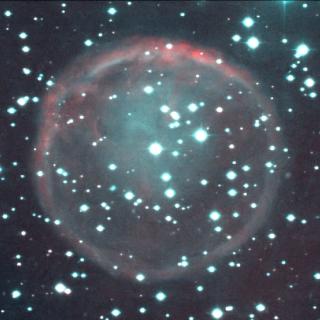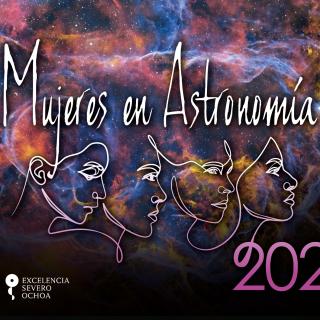The official opening of “SuperWASP,” a new instrument installed at the Roque de los Muchachos Observatory, in the municipality of Garafía, took place this morning at the Isaac Newton Group of Telescopes headquarters in Santa Cruz de la Palma. This instrument, designed to detect thousands of planets outside of our own solar system, will be robotic.
The ceremony was opened by Carlos Martínez Roger, Sub-director of the Instituto de Astrofísica de Canarias, who said: “ Although it is true that the Canarian Observatories are famous for the outstanding results obtained with the many great solar and night telescopes installed in the last decades, we are also proud to be able to offer excellent opportunities at those instruments dedicated to specific programmes, like in the case of SuperWASP.” As a researcher, and in the name of the scientific community, he concluded by giving thanks to the island of La Palma, and, in particular to the municipality of Garafía “for their generous hospitality.”
The Principal Investigator for the Project, Dr. Don Pollacco, of the Queens University at Belfast, said “While the construction and initial commissioning phases of the facility have been only 9 months long, SuperWASP represents the culmination of many years work from astronomers within the WASP consortium. Data from SuperWASP will lead to exciting progress in many areas of astronomy, ranging from the discovery of planets around nearby stars to the early detection of other classes of variable objects such as supernovae in distant galaxies”. He assured that “We are going to discover planets sometime this year.”
At the ceremony, Martin Ward, of the University of Leicester and representative of the Particle Physics and Astronomy Research Council (PPARC), emphasized the ability to achieve extraordinary results with a small instrument like SuperWASP, which could eventually give us an answer to whether we are alone in the Universe.”
Moreover, Dr. René Rutten, Director of the Isaac Newton Group of Telescopes) stated that “SuperWASP is a very nice example of how clever ideas to exploit the latest technology can open new windows to explore the universe around us, and shows that important scientific programmes can be done at very modest cost.”
Vicente Peñate, mayor of Garafía, stated that he was proud because the contribution of the Roque de los Muchachos Observatory will be substantial, not only in regard to the number of planets found with this new instrument, but also because of its importance. And “under the commitment that new planets will be discovered,” he asked for the anticipation of a local “Palmero” name for its identification at the time of its baptism. In spite of the fact that the celebration took place at Santa Cruz de la Palma, the mayor of Garafía concluded the act by means of a symbolic cut of a distant ribbon on the instrument, located at the Roque de los Muchachos Observatory. The cutting of the ribbon was carried out through the pushing of a button from a computer connected to the facility by means of a webcam. Therefore, this robotic telescope was also opened through remote control.
Extrasolar Planets
Only about a hundred extra-solar planets are currently known, and many questions about their formation and evolution remain unanswered due to the lack of observational data. This situation is expected to improve dramatically as SuperWASP, which is presently entering its operational phase, produces scientific results. Construction of the instrument began in May 2003, and in autumn last year the first test data was obtained which showed the instrument’s performance to exceed initial expectations.
SuperWASP (Wide Angle Search for Planets) is the most ambitious project of its kind anywhere in the world. Its extremely wide field of view combined with its ability to measure brightness very precisely allows it to view large areas of the sky and accurately monitor the brightness of hundreds of thousands of stars. If any of these have nearby Jupiter-sized planets then they may move across the face of their parent star, as viewed from the Earth. While no telescope could actually see the planet directly, its passage or transit, blocks out a small proportion of the parent star’s light i.e. we see the star get slightly fainter for a few hours. In our own solar system a similar phenomenon will occur on 8th June 2004 when Venus will transit the Sun’s disk.
One night’s observing with SuperWASP will generate about 50 million stellar brightness measurements, resulting in a vast amount of information, up to 60 GB – about the size of a typical modern computer hard disk (or 42000 floppy disks). This data is then processed using sophisticated software and stored in a public database hosted by the Leicester Database and Archive Service of the University of Leicester.
The history of the project over the last ten years including the exciting discovery of the Sodium Tail of Comet Hale-Bopp in 1997 can be found at http://www.superwasp.org/history.html and enclosed web links.
The SuperWASP facility is operated by the WASP consortium involving astronomers from the following institutes: Queen’s University Belfast, University of Cambridge, Instituto de Astrofísica de Canarias, Isaac Newton Group (La Palma), University of Keele, University of Leicester, Open University and University of St Andrews.
The SuperWASP instrument has cost approximately 600.000 Euros, and was funded by major financial contributions from Queen’s University at Belfast, the Particle Physics and Astronomy Research Council and the Open University.
SuperWASP has a novel optical design comprising up to eight scientific cameras, each resembling in operation a household digital camera, and collectively attached to a conventional telescope mount. SuperWASP has a field-of-view some 2000 times greater than a conventional astronomical telescope. The instrument, which will eventually be capable of running under robotic control, is housed in its own customised building.
Pictures of the SuperWASP facility and some of its astronomical first-light images are available at http://www.superwasp.org/firstlight.html
Other Web Links:
The SuperWASP project home page: http://www.superwasp.org
This includes background information and details of the project partners.
The Isaac Newton Group of Telescopes (ING): http://www.ing.iac.es
The Leicester Database and Archive Service (LEDAS):ledas-www.star.le.ac.uk
The Particle Physics and Astronomy Research Council (PPARC): pparc.ac.uk
Transit of Venus: http://www.vt-2004.org
Further technical details can be found from the project home page at


